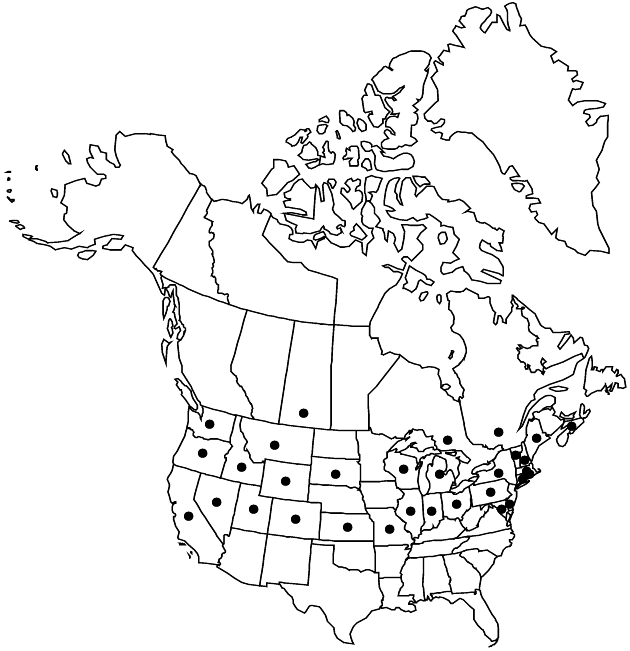Difference between revisions of "Tanacetum balsamita"
Sp. Pl. 2: 845. 1753.
FNA>Volume Importer |
imported>Volume Importer |
||
| Line 8: | Line 8: | ||
}} | }} | ||
|common_names=Costmary;chrysanthème balsamique | |common_names=Costmary;chrysanthème balsamique | ||
| + | |special_status={{Treatment/ID/Special_status | ||
| + | |code=I | ||
| + | |label=Introduced | ||
| + | }} | ||
|basionyms= | |basionyms= | ||
|synonyms={{Treatment/ID/Synonym | |synonyms={{Treatment/ID/Synonym | ||
| Line 40: | Line 44: | ||
|elevation=0–1800 m | |elevation=0–1800 m | ||
|distribution=N.S.;Ont.;Que.;Sask.;Calif.;Colo.;Conn.;Del.;Idaho;Ill.;Ind.;Kans.;Maine;Md.;Mass.;Mich.;Mo.;Mont.;Nev.;N.H.;N.Y.;Ohio;Oreg.;Pa.;R.I.;S.Dak.;Utah;Vt.;Wash.;Wis.;Wyo.;Asia. | |distribution=N.S.;Ont.;Que.;Sask.;Calif.;Colo.;Conn.;Del.;Idaho;Ill.;Ind.;Kans.;Maine;Md.;Mass.;Mich.;Mo.;Mont.;Nev.;N.H.;N.Y.;Ohio;Oreg.;Pa.;R.I.;S.Dak.;Utah;Vt.;Wash.;Wis.;Wyo.;Asia. | ||
| + | |introduced=true | ||
|tables= | |tables= | ||
|references= | |references= | ||
| Line 62: | Line 67: | ||
|publication title=Sp. Pl. | |publication title=Sp. Pl. | ||
|publication year=1753 | |publication year=1753 | ||
| − | |special status= | + | |special status=Introduced |
| − | |source xml=https:// | + | |source xml=https://bibilujan@bitbucket.org/aafc-mbb/fna-data-curation.git/src/bb6b7e3a7de7d3b7888a1ad48c7fd8f5c722d8d6/coarse_grained_fna_xml/V19-20-21/V19_817.xml |
|tribe=Asteraceae tribe Anthemideae | |tribe=Asteraceae tribe Anthemideae | ||
|genus=Tanacetum | |genus=Tanacetum | ||
Revision as of 20:41, 27 May 2020
Perennials, 30–80(–120) cm. Stems 1, erect, simple or branched (strigose, glabrate). Leaves basal and cauline; petiolate (proximal) or sessile (distal); blades (basal and proximal cauline) mostly elliptic to oblong, 10–20 × 2–8 cm, usually not pinnately lobed (sometimes with 1–4+ lateral lobes near bases), margins ± crenate, faces usually silvery strigose or sericeous (at least when young), glabrescent, ± gland-dotted. Heads (3–)10–60+ in corymbiform arrays. Involucres (3–)5–8(–10) mm diam. (phyllaries 40–60+ in 3–4+ series, tips usually ± dilated). Receptacles flat to convex. Ray florets usually 0 [sometimes 12–15, pistillate, fertile; corollas white, laminae 4–6+ mm]. Disc corollas ca. 2 mm. Cypselae ± columnar, 1.5–2 mm, 5–8-ribbed (with non-mucilaginous glands); pappi coroniform, 0.1–0.4 mm (entire or ± toothed). 2n = 18, 54.
Phenology: Flowering Aug–Sep.
Habitat: Disturbed sites, abandoned plantings
Elevation: 0–1800 m
Distribution

Introduced; N.S., Ont., Que., Sask., Calif., Colo., Conn., Del., Idaho, Ill., Ind., Kans., Maine, Md., Mass., Mich., Mo., Mont., Nev., N.H., N.Y., Ohio, Oreg., Pa., R.I., S.Dak., Utah, Vt., Wash., Wis., Wyo., Asia.
Discussion
Selected References
None.